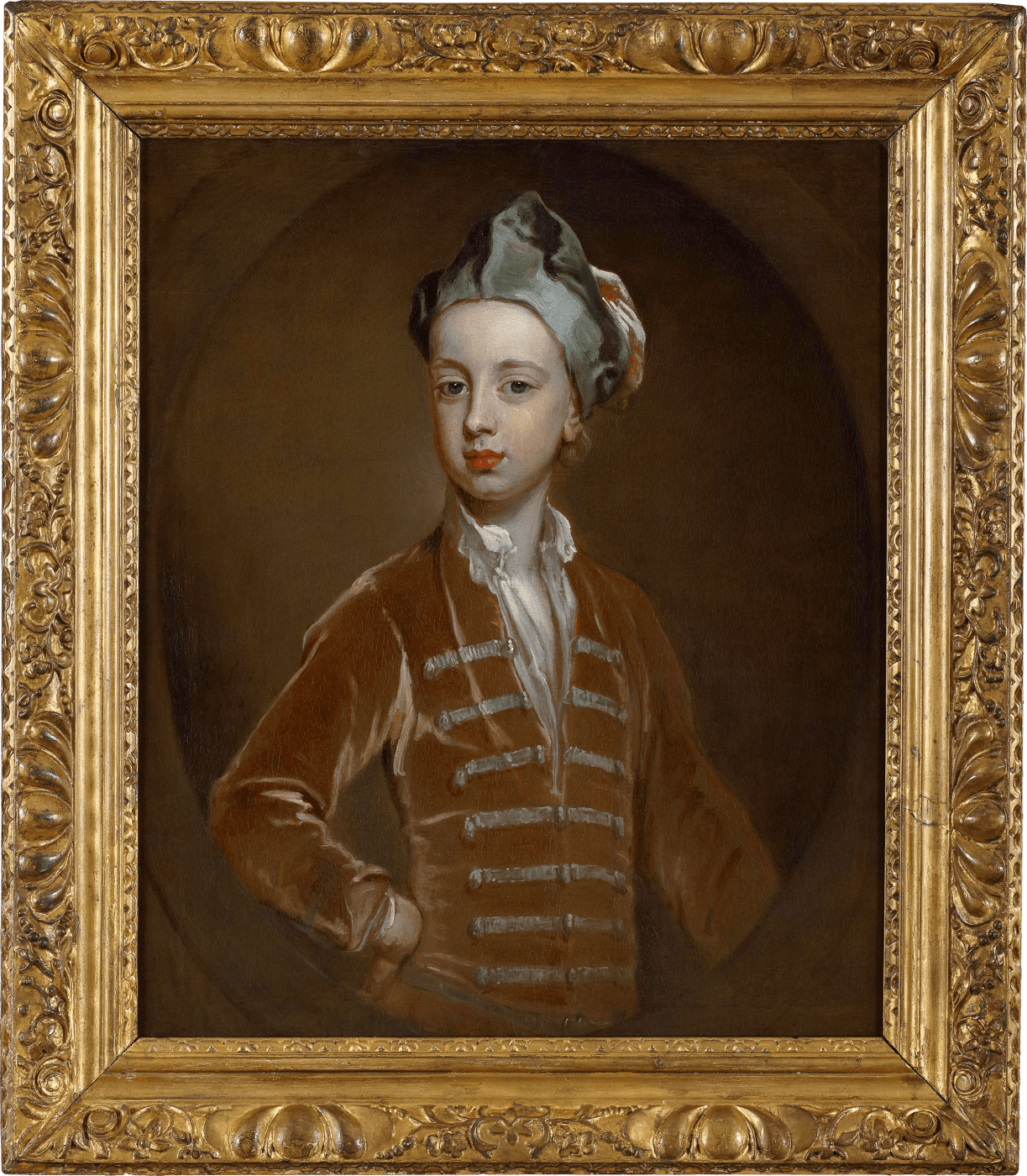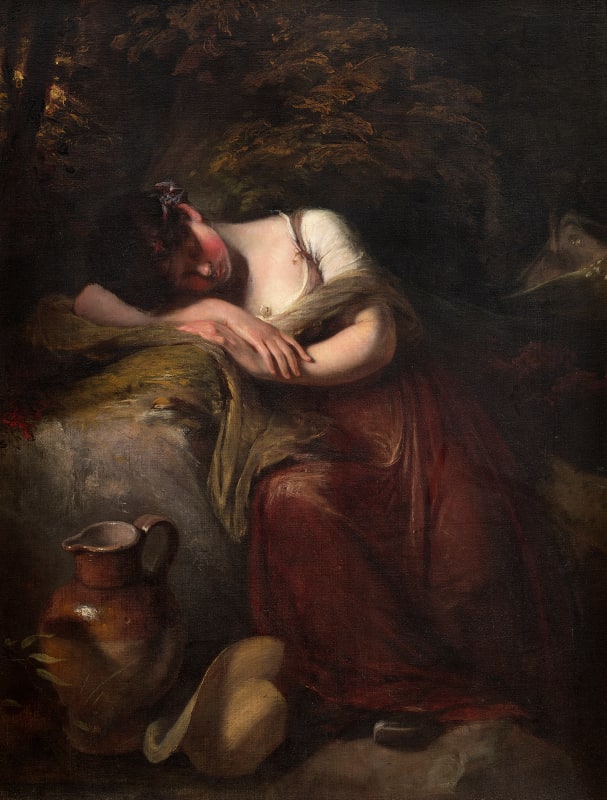Full Biography
‘A gentleman of good morals, true to his friends, affable and free from … affectation or pride’.
Sir Godfrey Kneller was by all accounts ‘a gentleman of good morals, true to his friends, affable and free from … affectation or pride’.[1] The king of British Baroque portraiture, his prolificacy was highly advantageous given the high demand for portraiture in the ‘grand style’ among the high societies of eighteenth-century England.
Born in Lübeck, Germany, Kneller was the son of an official at Swedish royal court, Zacharias Kniller and his wife Lucia Beuten. As a young man, he studied mathematics at the University of Leiden but soon realised his talent for ‘drawing figures after the historical manner’.[2] He moved to Amsterdam to work under Rembrandt and Ferdinand Bol. The monumental scale, biblical subjects and allegorical iconography in his work at this point betray these early influences.
Kneller's familial connections and affiliation with the Rembrandt School quickly secured him commissions. He travelled to Antwerp in around 1669 and his style developed in confidence. He employed studio models and introduced dramatic foreshortening, plunging diagonals and didactic gesture to enhance the sense of movement in his portraiture.
In 1672 he travelled to Rome and Venice and studied with the sculptor Gian Lorenzo Bernini and painter Carlo Maratta, by whose encouragement he looked to Raphael and Titian for inspiration. His knowledge of architecture, anatomy and antique statuary enhanced his history painting but in 1675 Kneller travelled back to Lübeck then Hamburg and, ‘longing to see Sir Anthony Van Dyck's Works, being most ambitious of imitating that great Master,’ onto London in 1676.[3]
Sir Godfrey Kneller was by all accounts ‘a gentleman of good morals, true to his friends, affable and free from … affectation or pride’.[1] The king of British Baroque portraiture, his prolificacy was highly advantageous given the high demand for portraiture in the ‘grand style’ among the high societies of eighteenth-century England.
Born in Lübeck, Germany, Kneller was the son of an official at Swedish royal court, Zacharias Kniller and his wife Lucia Beuten. As a young man, he studied mathematics at the University of Leiden but soon realised his talent for ‘drawing figures after the historical manner’.[2] He moved to Amsterdam to work under Rembrandt and Ferdinand Bol. The monumental scale, biblical subjects and allegorical iconography in his work at this point betray these early influences.
Kneller's familial connections and affiliation with the Rembrandt School quickly secured him commissions. He travelled to Antwerp in around 1669 and his style developed in confidence. He employed studio models and introduced dramatic foreshortening, plunging diagonals and didactic gesture to enhance the sense of movement in his portraiture.
In 1672 he travelled to Rome and Venice and studied with the sculptor Gian Lorenzo Bernini and painter Carlo Maratta, by whose encouragement he looked to Raphael and Titian for inspiration. His knowledge of architecture, anatomy and antique statuary enhanced his history painting but in 1675 Kneller travelled back to Lübeck then Hamburg and, ‘longing to see Sir Anthony Van Dyck's Works, being most ambitious of imitating that great Master,’ onto London in 1676.[3]
Establishing himself in London as a sophisticated portraitist, by around 1678 Kneller was recognised as the main rival to King Charles II’s Principal Painter, Sir Peter Lely, and his reputation grew daily so that ‘most noblemen & Ladies would have their picture done by him’. [4] He developed an exhaustive portfolio of templates, his colour palette became gradually tempered and his paint application more painterly, in line with the British taste for Van Dyck. His commissions were many and throughout the 1680s his portraits boast of swaggering poses in the ‘Grand Manner’, now full-length with a heightened sense of movement and physical presence.
Kneller became joint court painter for William and Mary and later for Queen Anne. In 1692, he was awarded a knighthood, made a gentleman of the privy chamber, and in 1700, made a knight of the Holy Roman Empire by Emperor Leopold.
Kneller revived Rubens’s technique of drawing in chalk, a practice not seen in England since Holbein, which instigated a new trend away from ‘Poussinisme’ and towards ‘Rubenisme’. His portraits of this period are characterised by fluid, open brushwork and graceful composition and he enjoyed painting sitters in antique or allegorical guise and Elizabethan-style ‘melancholy’ portraits. He also introduced a ‘Kit-Cat’ portrait type, measuring 36 by 28 inches rather than the standard 30 by 25 inches previously employed for bust portraits. This life-size scale generated heightened realism, usually including the head and shoulders and one or both hands.
In 1703, Kneller moved to Lincoln's Inn Fields, marrying Susanna Grave in 1704, daughter of the Reverend John Cawley, a union which was childless. Remaining principal painter to George I after his accession in 1714, he gained a baronetcy in 1715. He died in 1723 and was buried in St Mary's Church in Twickenham, leaving around five hundred, unfinished works.
His influence in British art is manifest in the work of Highmore, Vanderbank, Ramsay, Joseph Wright of Derby, Gainsborough, Reynolds and Hogarth, each of whom absorbed aspects of his technical mastery and style. His range and industry is unparalleled, painting every monarch from Charles II to George I. His teaching at the Kneller Academy (founded in 1711) had a powerful impact on succeeding generations and his longevity has awarded him the deserved title as Britain's most prolific portraitist.
[1] M. Smith, The Art of Painting According to the Theory and Practice of the Best Italian, French and German Painters, (London, 1692), p. 23.
[2] B. Buckeridge, ‘An essay towards an English school of painting’ by R. de Piles, In: The Art of Painting, with the Lives and Characters of Above 300 of the Most Eminent Painters, 3rd edition (London, 1754), p. 354.
[3] M. Smith, ibid, p. 24.
[4] G. Vertue, ed. K. Esdaile, ‘Note books’, Walpole Society, 1.28.













